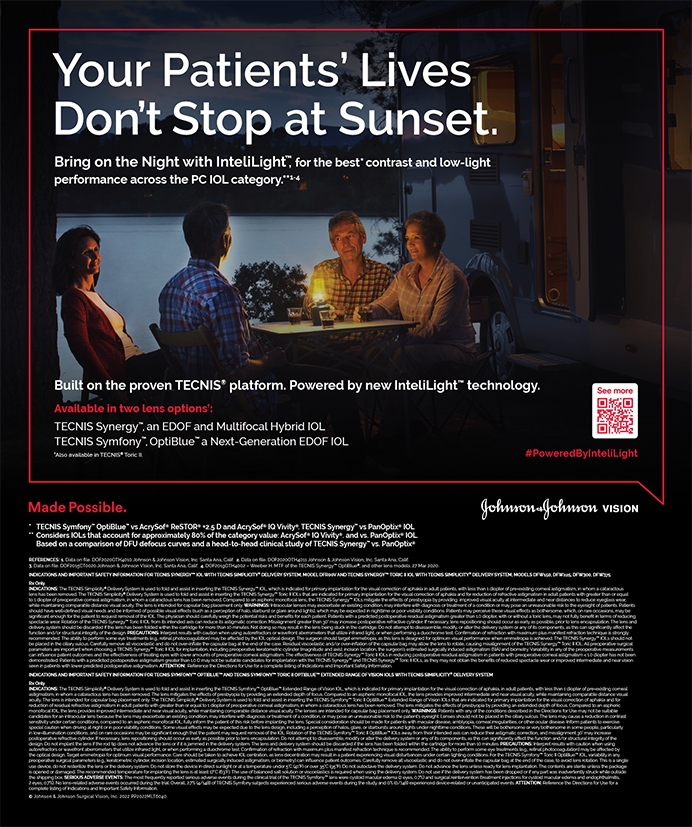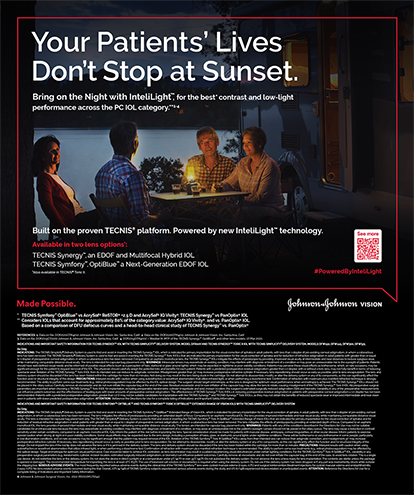In Canada today, a large percentage of cataract surgery is still performed in multidisciplinary public hospitals. The significant economic pressure on Canadian surgeons during the past 2 years has resulted from reduced net funding for these hospitals. Even with the best resources, decreased funding puts a disproportionate strain on elective surgery. The upshot has been growing waiting lists caused by less access to elective surgical resources. The real test, then, for ophthalmologists has been to maintain efficiency and safety when surgical time and staffing have decreased, but surgical volume is expected to remain the same or increase.
Through customization and preparation, I have been able to mitigate the effects of shrinking health care dollars. My experience may offer a few pearls for my compatriots in the United States.
REDUCING INTRACASE AND INTERCASE SURGICAL TIMES
When thinking about a surgical day in terms of efficiency and safety, I divide it into intercase time (what is done between surgical cases) and intracase time (what is done during a surgical case). I do everything I can preoperatively to minimize both of these times and maximize flow.
Hospital laws now mandate a preoperative huddle of the surgeon, nurse, and anesthesiologist, which occurs 10 minutes prior to the beginning of the day. Patients are identified that have special needs so that equipment or medications are present on the case cart when the patient arrives. Patient identifiers are then located not only on the surgical chart but also on the master list to flag those who may require specific technologies or procedures. Examples include pseudoexfoliation, trauma, higher grades of floppy iris, or ancillary surgery like limbal relaxing incisions or a filtering procedure. Having the appropriate tools and settings reduces both intra- and intercase times.
When reducing intercase time, equipment and patient flow are key. In my OR, the patient who has just undergone surgery and his or her case cart leave one door, and the new equipment enters through another door. All surgeons use a standardized tray to minimize the potential for confusion, which facilitates the setup, and the surgeon is expected to assist his or her nurse where necessary. The next patient is in the room during the setup process, and patient identifiers (name, eye, procedure, and lens type and power) are confirmed verbally by the surgeon, both at the beginning and end of the case. Surgical days are planned so that I perform on all right eyes or all left eyes. If there is a mixture, I complete the surgeries for one side first and then move on to the next side. This separation significantly enhances the speed of turnover, because I am never moving anything.
CUSTOMIZING PHACO SETTINGS
To reduce intracase time and to enhance safety, I provide to my patients a customized phaco setting linked to the density of their cataract. I preoperatively grade the cataract using software on the Pentacam Comprehensive Eye Scanner (Oculus, Inc., Lynnwood, WA). If I preoperatively adjust my phaco settings to reflect the density of the cataract, I can develop a very efficient plan for the disassembly and removal of the nuclear and cortical material with the least amount of energy and the least amount of balanced salt solution, which I apply at the beginning of surgery.1 Given that there is a direct relationship between endothelial cellular health and the amount of energy and fluid that is distributed throughout the eye during the surgical case, preoperatively adjusting my phaco settings improves safety. On average, I can save between 45 and 60 seconds per case with no changes to power and fluidics, and this makes a difference in my efficiency. Plus, corneas generally look better 1 day after surgery.
OR SETUP
When performing cataract surgery, I use a temporal approach to both right and left eyes so that I can easily rotate the chair around the bed, which is always in the same place. I also have a ceiling-mounted microscope, which allows me to shift easily between the right and left eyes. My OR is equipped with the Whitestar Signature System with the Ellips FX handpiece (Abbott Medical Optics Inc., Santa Ana, CA). It provides a simultaneous blend of longitudinal and transversal energy. As a result, it minimizes repulsion with the rapid disassembly of even the densest cataract and stable fluidics. Its nonzero start mode allows me to easily program my three settings for cataract grades, and the results have been impressive.
CONCLUSION
As the funding for health care changes in the United States, the practices of my surgical colleagues there will be micromanaged. Resources will shrink, but the population of patients will grow. Preparation and customization will allow US ophthalmologists to mitigate cancellations and cutbacks without compromising efficiency or safety.
Don R. Nixon, MD, is senior staff ophthalmologist at Royal Victoria Hospital in Barrie, Ontario, Canada. He is a consultant to Abbott Medical Optics Inc. and Oculus, Inc. Dr. Nixon may be reached at (705) 737-3737; trimedeyedoc@gmail.com.
- Nixon DR.Preoperative cataract grading by Scheimpflug imaging and effect on operative fluidics and phacoemulsification energy.J Cataract Refract Surg.2010;36(2):242-246.


